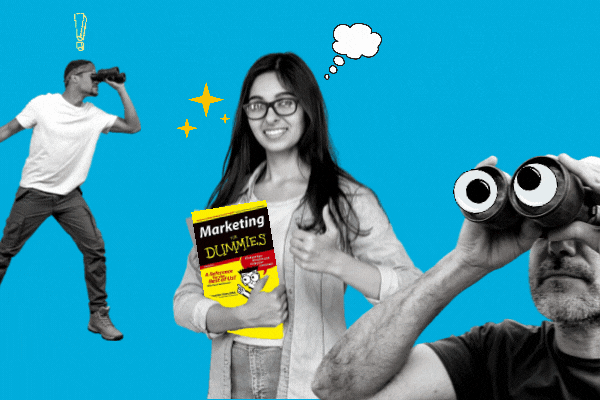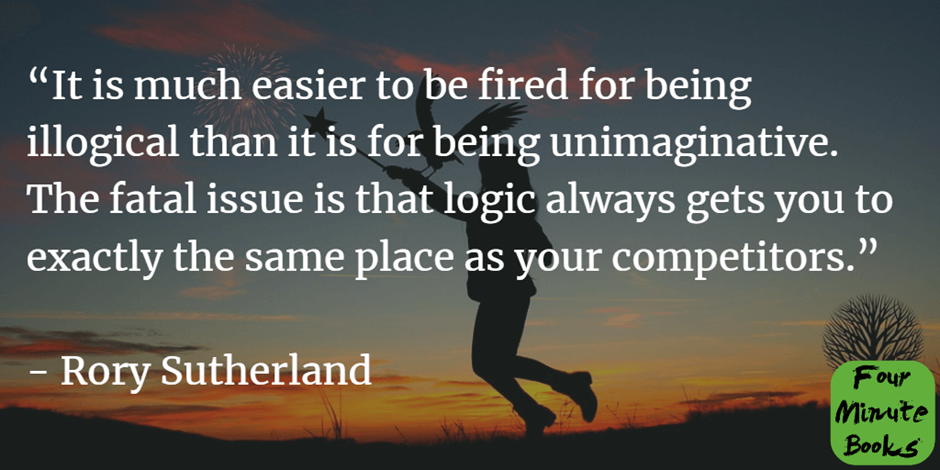88% of financially successful people read at least 30 mins per day. 85% read two or more self-improvement books per month. Bill Gates reads 50 books a year. Getting the pattern?

Ever heard the phrase "never a reader, never a leader"? No? Well of course you haven't, I just made it up. But it's pretty accurate, right?
Tom Corley, the author of Rich Habits, found that people who make more than $160,000 a year read for self-improvement, education, and success. On the other hand, those with an annual income of $35,000 or less read almost primarily to be entertained. It seems that the books you pick up reflect directly on your career.
So, we asked our very talented marketing team for their favourite books. And they did not disappoint. Let's jump in.
Content Inc. by Joe Pulizzi

Recommended by: Izzy Casey, Head of Marketing
Joe Pulizzi is the founder of The Tilt, and is a bit of a content king. His book Content Inc warns its reader from following old, outdated rules. Instead Joe offers a new model for entrepreneurial success.
By focusing on building an audience first and defining products and services second, an entrepreneur can change the rules of the game and significantly increase the odds of financial and personal success.
– Joe Pulizzi
Content Inc. walks you through the entire process, showing how to
- Identify the intersection of your expertise and your future customer’s needs
- Determine how to "tilt" your sweet spot to find a place where little or no competition exists
- Establish your number-one channel for disseminating content (blog, podcast, YouTube, etc.)
- Use social media and SEO to convert one-time visitors into long-term subscribers
- Grow your business by expanding into multiple delivery channels
- Monetise your product or service for ultimate business success
- Understand how to sell your content asset for millions or build the business into a large enterprise
Joe has an "attract ideal customers first" policy, which bleeds into the book. Joe actually started with a product to get customers back in the day but was unsuccessful. What ended up working, and all the case studies featured in the book was creating fantastic content, building an audience, and then selling them what they want.
He offers a six-step process to get the job done.
Step one: Uncover your sweet spot. Joe claims that if you've been trying to build an audience, and have been unable to, the "sweet spot" is the best place to look. This is the content area your business will be based around. But what is the "sweet spot"? Well it is, Joe claims, ‘intersection of a knowledge or skill set (something the entrepreneur or business has a competency in) and a passion area (something the entrepreneur or business feels is of great value to him or her personally or to society at large).’
Step Two: Tilt your content. If you've not got the level of audience you're aiming for, you're most likely not leveraging the power of the "content totle". This means having a unique point of view on a popular topic.
“More and more, I find the best Content Inc programs revolve around aspirations, not needs. I’ve been guilty of telling marketers to “focus on customer pain points” since, well, forever. Focusing on pain points just gets you to the front door.
To get to the heart of your customers’ needs, you have to focus on what they want to be and help them get where they really want to go.
Instead of basics like “saving money” and “lowering costs”, let’s raise the bar to things like “giving our customers more free time to live the lives they want to” or “being a person that can make a difference in the world.”’
Content Inc – Joe Pulizzi
Step Three: Build your base. This is where the real work begins. Joe wants you to focus on, and choose, a primary platform, and pick just that one. Plus, content should be repurposed.
One 3 minute video can become:
- A YouTube video
- A video on Facebook
- A podcast episode on podcast apps and website
- A blog post
- A post on LinkedIn / Medium / Google+
- 2-3 tweets
“The easiest way to turn off your community members is to broadcast the same message across multiple channels. Instead, determine the kind of content that interests the members of your community in a way that is useful to them.”
Step Four: Harvest the audience. This is about converting your audience into subscribers. Joe is a huge advocate of owning your audience, and getting their email.
Step Five: Diversify. Now, after you've started slow, you can start moving to different platforms, bringing your loyal audience with you wherever you go.
Step Six: Monetise. Now, you're ready to make some money. Joe recommends doing this as soon as possible. Be ready with a business model and deliver value.
Not enough MarTech for you? Want to keep up-to-date with the industry? Just want to fill that god-shaped hole in your heart? Well, you're in luck. Check out the MarTech channel, right here!
Our channel brings the hottest MarTech topics and teachers to your very fingertips in the form of events, courses and resources. Plus, sign up for our newsletter to stay ahead of all the latest trends the MarTech space has to offer.
Delusions of Brandeur by Ryan Wallman
Recommended by: Catherine Rochford, Sales & Marketing Support Executive 
Maybe you don't like books that are 900 pages on intense marketing theory. I get it. Most business books are about 50,000 words too long.
So, Delusions of Brandeur is a bit of a balm. Ryan Wallman has managed to write a book about modern marketing practices which is well researched, informative, and very funny, in a highly concentrated format.
Ryan Wallman is Creative Director and Head of Copy at Wellmark, a Melbourne-based creative agency that specialises in healthcare. In his former life, he was a doctor and worked for several years in psychiatry so, as he says himself, he knows plenty about delusions.
The book is an ironic take on today's marketing gurus and practises, who massively overestimate their importance in the lives of consumers.
No Rules Rules by Reed Hastings, Erin Meyer
Recommended by: Holly Ripley, Senior Marketing Executive - Branding & Projects 
There's never been a company like Netflix. It has shaken up the entertainment industry, generating billions of dollars, and has changed the face of film-making. But how did it get there? One word: reinvention.
Netflix has reinvented itself again and again, from an online DVD rental service, in 1998, to today's giant of streaming.
Hastings’ “No Rules Rules: Netflix and the Culture of Reinvention” spells out how his company fosters an environment of employee “freedom and responsibility” (referred to internally as “F&R”). Hastings claims Netflix’s unique ways of doing business have formed the basis for its astronomical growth and category-dominating position today
"It's time to do things differently. Trust your team. Be radically honest. And never, ever try to please your boss. These are some of the ground rules if you work at Netflix".
The books draws on the huge experience of both authors and delves into how Netflix became the company it is today, essentially by throwing out every single business cliché you've ever heard of and completely redefining what a productive and happy workforce can be.
"Hastings set new standards, valuing people over process, emphasizing innovation over efficiency, and giving employees context, not controls. At Netflix, there are no vacation or expense policies. At Netflix, adequate performance gets a generous severance, and hard work is irrelevant. At Netflix, you don't try to please your boss, you give candid feedback instead. At Netflix, employees don't need approval, and the company pays top of market".
So, what are the no-rules rules?
- The Keeper Test, started by accident. After the dot com bubble burst, Netflix laid off one-third of its staff. This meant they had to prioritise their "keepers" - the most creative and collaborative people. This meant the “entire office felt like it was filled with people who were madly in love with their work,” Hastings writes.
- Inspiration from marriage counselling. While he was working frequently away from home, Reed's marriage became rocky. This led them to go to couple's therapy, where he learned to express resentments and be honest. “I began encouraging everyone to say exactly what they really thought, but with positive intent.”
- Employees don't need pre-approval for expenses, or strategic decisions, but will be fired if they do something dumb.
- The "Freedom & Responsibility" approach doesn't work across the entire company. He admits that eliminating oversight completely is impossible. He cites the company’s processes for employee safety and sexual harassment, customer data privacy, and financial reporting.
The Mind Club by Daniel Wegner and Kurt Gray
Recommended by: Josie Westcott Senior Marketing Executive
The Mind Club by Daniel M. Wegner and Kurt Grey answers a number of different questions, such as:
- Why some people can hit a CEO without being punished;
- How the minds of God and Google are alike; and
- How someone was acquitted of murder thanks to his sleep lab results.
The pair's research opens a trove of new findings, with insights into human behaviour that are scary as they are hilarious. By investigating the mind's perception of extraordinary targets, such as animals, machines, people in comas, god, Daniel and Kurt explain what it means to have a mind, and why it matters.
So, what are the book's key ideas?
Number one: The mind are defined by two traits. But not all minds act in the same way.
Well, the authors conducted several studies in which participants were asked about the mental characteristics of various beings: a robot, a CEO, a family dog, a dead person and so on. They found that people generally attribute a mind to beings with two specific traits; agency and experience.
Agency means to act in a planned manner and with control. Experience is all about such things as experiencing emotions, consciousness, and physical sensations.
Number two: We judge a person's character and moral rites based on the mind they seem to have.
How we judge moral acts doesn't just depend solely on the deed itself. It's also influenced by the type of mind the doer and receiver seem to have. So, you might be angry if you see a bodybuilder bunch a cat, but if a cat punched a bodybuilder, that would be hilarious.
Number Three: To ease the guilt of hurting others, people can convince themselves that certain people don’t think or feel. So, this is why we dehumanise, but the process can happen in two different ways: animalisation and mechanisation.
Alchemy by Rory Sutherland
Recommended by: Holly Ripley, Senior Marketing Executive - Branding & Projects
In a world built on logic, from data-driven technologies to spreadsheet-run businesses, Rory encourages us to abandon reason and entertain the idea of irrational possibilities. While leading a life of logic may give us the comforting illusion that we are in control of our lives, it also limits our ability to think outside of the box.
Rory teaches us how irrational thinking can be the key to problem solving, techniques to tackle the puzzle that is human behaviour and how breaking out of the constraints of logic can help us unlock creative ideas.

Rory challenges the very notion that human behaviour is built on logic and demonstrates how we’re in fact driven by unconscious desires explaining why placebos are so powerful, and why we’re drawn to the beautiful, the extravagant and the absurd. So, if you want to influence people’s choices you had better be prepared to bypass reason.
So, what are the seven key lessons from the book? Well:
- Lesson 1: Spend Time Figuring Out Why Things Work
- Lesson 2: The Opposite Of a Good Idea Is a Good Idea
- Lesson 3: Abandon Logic So You Can Better Understand People and The Market
- Lesson 4: We Try to Solve Problems With Broken Binoculars
- Lesson 5: Create Magic by Making People Feel Good
- Lesson 6: Economic Logic Suggests That More Is Better. Psycho-Logic Believes That Less Is More
- Lesson 7: Why Branding Is Important and Why It Should Be Costly?
Customer Insight Strategies: How to Understand Your Audience and Create Remarkable Marketing by Christine Bailey
Recommended by: LXA recommended book choice 📚📖 
In today’s fast-paced marketing world, increasingly more is being asked of our marketers. We’re expected to be data-driven, creative thinkers, producing triple the results in half the time. So how do we keep up with the increasing demands?
We need to take a step back and put customer insight first. In order to create memorable, purpose-driven marketing, we need to nurture our leads and understand our customers. Christine Bailey outlines the critical role of customer insight and provides us with the techniques and strategies to uncover our consumers.
"As marketers, we all want to create extraordinary and memorable marketing, but remarkable marketing is becoming increasingly elusive. We’re faced with hyper-informed digital customers, tightening budgets, quarterly targets and stifling regulation and it’s difficult to stop, think, and consider how we could be doing things differently to get to that extraordinary place.
We’ve entered the ‘intelligent era’, where deep customer insight should inform our every move. The world is constantly changing, so insight is constantly changing, and what your customers thought yesterday may not be what they think today.
If you want customer insight to drive your marketing, it’s not something you can do just once. You will need to build new habits."
The three key takeaways from the book:
- We need to listen to our customers and inform every decision with insight and evidence
- Marketers need to be strong, adaptable, open-minded and unafraid to do things differently
- Insight-driven businesses are set to dominate in the future and marketers that use customer insights to understand their audience are likely to do remarkable marketing
